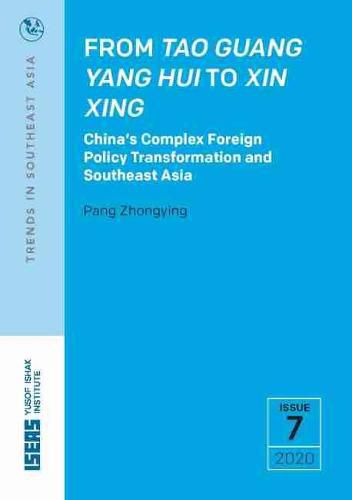Readings Newsletter
Become a Readings Member to make your shopping experience even easier.
Sign in or sign up for free!
You’re not far away from qualifying for FREE standard shipping within Australia
You’ve qualified for FREE standard shipping within Australia
The cart is loading…






This article traces China’s foreign policy transformation from 2013 to the present. It also examines Deng Xiaoping’s doctrinal response to the political crises of 1989-91 and compares it to current Chinese foreign policy doctrines.
From the early 1980s until the 2010s, China’s foreign policy has generally focused on keeping a low profile. Deng’s Tao Guang Yang Hui foreign policy doctrine is characterized by its No’s , while Xi Jinping’s Xin Xing is marked by its New’s . The move from Tao Guang Yang Hui to Xin Xing is a major doctrinal shift in China’s foreign policy.
Since the 19th Party Congress in 2017, Xi’s new narratives have seemingly dominated Chinese foreign policy. However, old principles, particularly that of non-interference or no hegemony , are still alive, albeit in a different form.
This transformation is driven by three forces, which this paper describes in the 3As framework: China’s Ambition to be a great country and a non-hegemon in a changing world; its provision of Alternatives to fill the gaps in regional and global governance structures; and its Adaptation to what it deems as unprecedented major changes in a century (Da Bian Ju).
As China undergoes this foreign policy transformation, contradictions and dilemmas inevitably emerge.
While China’s foreign policy transformation is currently being disrupted by the coronavirus crisis, there have been adjustments which were already apparent before the crisis. The ambitious One Belt and One Road strategy, for instance, was replaced by the Belt and Road Initiative ; constructive intervention was replaced by constructive role ; and common destiny was replaced by shared future . Looking ahead, China’s foreign policy transformation could include more strategic or, at least, tactical adjustments.
$9.00 standard shipping within Australia
FREE standard shipping within Australia for orders over $100.00
Express & International shipping calculated at checkout
This article traces China’s foreign policy transformation from 2013 to the present. It also examines Deng Xiaoping’s doctrinal response to the political crises of 1989-91 and compares it to current Chinese foreign policy doctrines.
From the early 1980s until the 2010s, China’s foreign policy has generally focused on keeping a low profile. Deng’s Tao Guang Yang Hui foreign policy doctrine is characterized by its No’s , while Xi Jinping’s Xin Xing is marked by its New’s . The move from Tao Guang Yang Hui to Xin Xing is a major doctrinal shift in China’s foreign policy.
Since the 19th Party Congress in 2017, Xi’s new narratives have seemingly dominated Chinese foreign policy. However, old principles, particularly that of non-interference or no hegemony , are still alive, albeit in a different form.
This transformation is driven by three forces, which this paper describes in the 3As framework: China’s Ambition to be a great country and a non-hegemon in a changing world; its provision of Alternatives to fill the gaps in regional and global governance structures; and its Adaptation to what it deems as unprecedented major changes in a century (Da Bian Ju).
As China undergoes this foreign policy transformation, contradictions and dilemmas inevitably emerge.
While China’s foreign policy transformation is currently being disrupted by the coronavirus crisis, there have been adjustments which were already apparent before the crisis. The ambitious One Belt and One Road strategy, for instance, was replaced by the Belt and Road Initiative ; constructive intervention was replaced by constructive role ; and common destiny was replaced by shared future . Looking ahead, China’s foreign policy transformation could include more strategic or, at least, tactical adjustments.